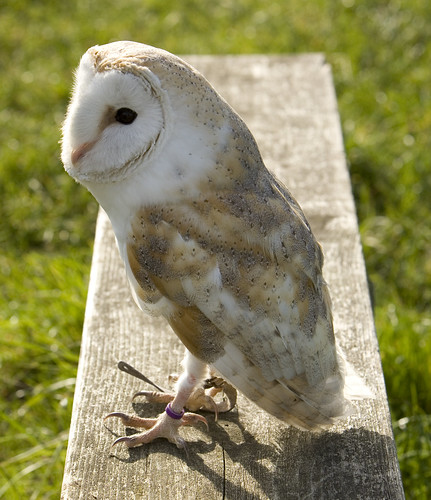
The Bald Eagle (Haliaeetus leucocephalus) is a bird of prey found in North America that is most recognizable as the national bird and symbol of the United States.
Its range includes most of Canada and Alaska, all of the contiguous United States, and northern Mexico. It is found near large bodies of open water with an abundant food supply and old-growth trees for nesting.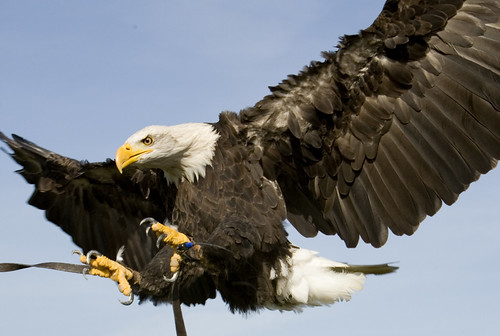
We began our Eagle Handling day by taking out the largest bird they had to fly from the glow.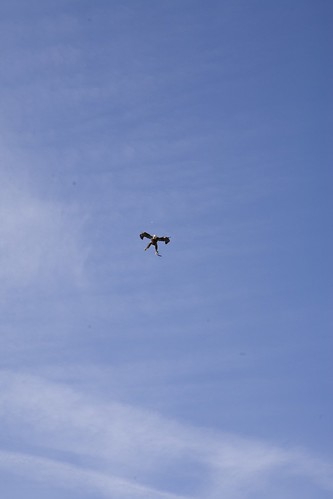
You will see the bird as a small dot in the sky when it falls down towards you. After a while you are realizing that it will not make any more circles, the feet are spread out first and the bird is actually on "final approach" toward your arm.
Safely landed.
Here, the bird is coming in from the side rather than from above. Easy to illustrate why you should stand with your shoulder towards the bird and your arm outstretched, as it approaches. You do not want the bird in your face if it misses the landing.
Good landing.
The Bald Eagle is a large bird, with a body length of 71-96 cm, a wingspan of 168-244 cm, and a weight of 3-6.3 kg. Its diet consists mainly of fish, but it is an opportunistic feeder. It hunts fish by swooping down and snatching the fish out of the water with its talons.
And taking off.
The Bald Eagle
White-tailed Eagle
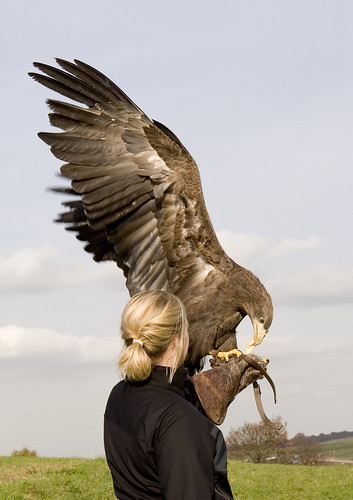
Our second bird for the day was a White-tailed Eagle (Haliaeetus albicilla), also known as the Sea Eagle (Havsörn in Sweden). Here she is feeding on a small chicken. You do NOT want to mess with her snack at this point.
The White-tailed Eagle is also a large bird, 70-90 cm long with a 200-250 cm wingspan. Females, weighing 4-6.9 kg.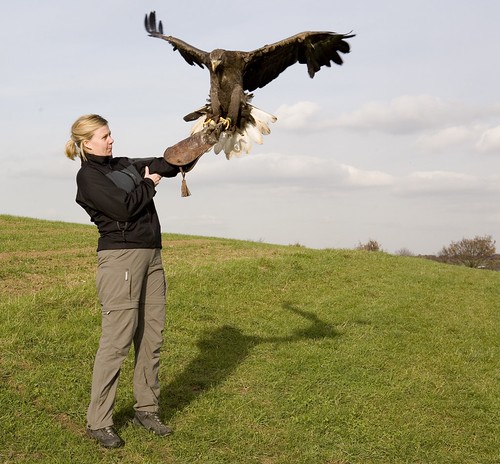
This large eagle breeds in northern Europe and northern Asia. The Eagle's diet is varied, including fish, birds, carrion and, occasionally, small mammals. Many birds live almost wholly as scavengers, regularly pirating food from otters and other birds, but this eagle can be a powerful hunter, as well. They pair for life.
Oooooops a missed landing.
Barn Owl
More Eagles

In the afternoon we had to drive to a different location with our two eagles. They were having falcons flying back at the center and if we wold have stayed there our birds would have eaten their birds.
Magnus is holding an Tawny Eagle (Aquila rapax). It is about 62-72 cm in length and has a wingspan of 165-185cm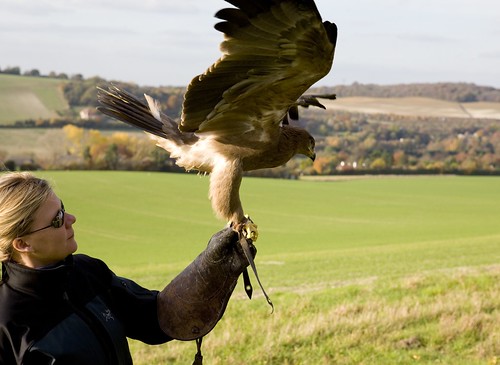
Taking off across the green hills.
With both our eagles for the afternoon.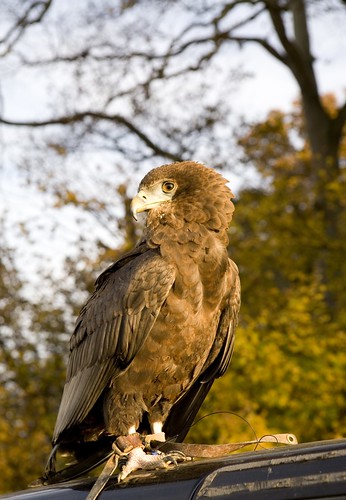
On top of the car
Bird in the top of the three.
This "little" fellow was quit friendly. You could NOT have done this with the previous birds. They would have tore your hand off.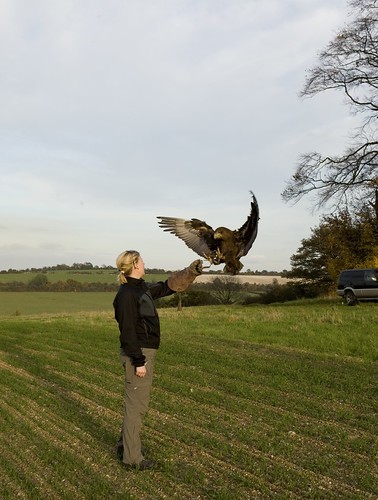
And back to the glove.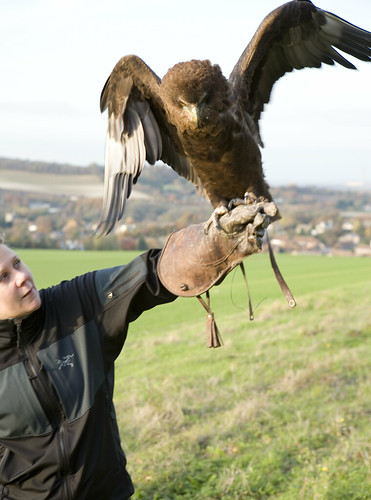

Hey there! Good birdy.
Still, not an insignificant wingspan.
Harris Hawk

We went on a long walk through the forest with this very agile little Harris Hawk. Such a lovely bird. It was like walking a dog. He was following us through the forest darting between branches and bushes, brushing our arms and legs wile darting past us with breath taking speed.
Catching a lift. Can we go a bit faster please?
The Harris Hawk, is a medium-large bird of prey which breeds from the southwestern USA south to Chile and central Argentina. It has a length of 60 cm and a wingspan of 1.2 m; the average weight is about 900 g.
Harris Hawks' social behavior is unusual for raptors. Young may stay with their parents for up to three years, helping to raise later broods. They also hunt together, groups of two to six birds often cooperating to flush and then capture prey. This social behavior gives Harris Hawks an easygoing nature that makes them desirable captive birds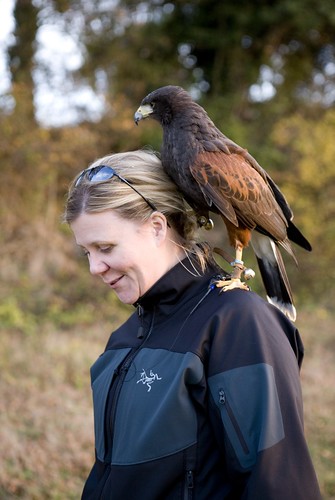
Good grip of the pony tail.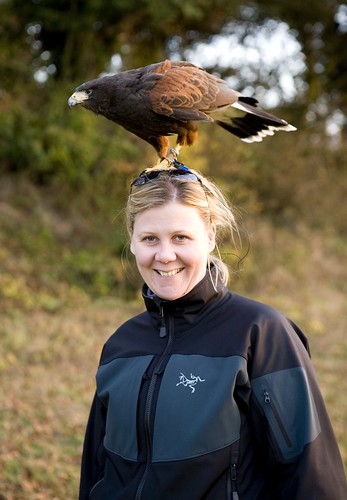
You are not scratching mys sunglasses are you?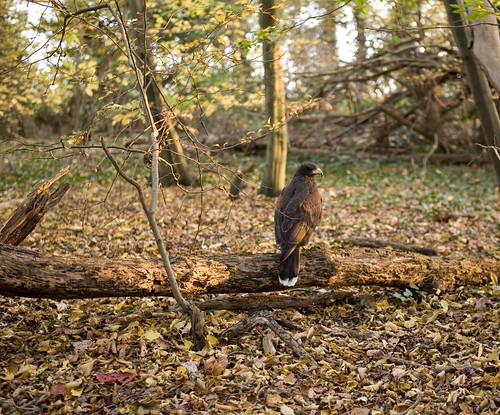
What a magnificent flying acrobat. He would manage to squeeze between branches head first with wings folded in tiny little clearings.
